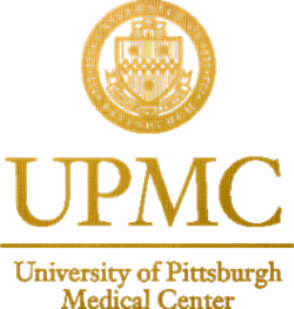
in New York & New Jersey

















Living with osteoarthritis can make even the simplest movements feel challenging. Whether it's bending, walking, or reaching for something on a shelf, joint pain and stiffness can disrupt your daily routine and diminish your quality of life.
As cartilage wears down over time, inflammation and discomfort can settle into your joints - especially in the spine, knees, hips, or hands - making it harder to stay active and independent. At the Institute of Comprehensive Spine Care, we specialize in providing advanced osteoarthritis treatment options. Led by our highly experienced spine surgeon, Dr. Gbolahan Okubadejo, MD, FAAOS, our team is committed to helping you find relief from osteoarthritis pain and improving your overall quality of life. With our expertise and personalized approach, we strive to deliver the most effective osteoarthritis treatments tailored to your specific needs
Osteoarthritis is a common condition characterized by the gradual breakdown of cartilage in the joints, including those in the spine.
This degeneration can lead to pain, stiffness, reduced mobility, and a diminished quality of life. At the Institute of Comprehensive Spine Care, we understand the physical and emotional impact osteoarthritis can have. That's why we offer comprehensive care that addresses both the symptoms and the underlying causes of osteoarthritis.

Osteoarthritis is most commonly seen in older adults, particularly those over 50. However, it can affect people of any age, especially if you have had prior joint injuries, repetitive stress on the joints, or a family history of the condition. Its symptoms tend to develop gradually and often become more noticeable as the cartilage in the joints wears down.
Here are some of the most common signs to watch for.
Diagnosing osteoarthritis begins with a thorough discussion of your symptoms, medical history, and any prior joint injuries or conditions that could be contributing to joint pain or stiffness.
During a consultation for osteoarthritis treatment NYC & NJ spine surgeon, Dr. Okubadejo, will perform a detailed physical examination to assess joint tenderness, swelling, range of motion, and overall joint function. This evaluation helps identify which joints are affected and how the condition is impacting your daily mobility.
To confirm the diagnosis and better understand the extent of joint damage, we may use imaging studies such as X-rays, which can reveal cartilage loss, bone spurs, or joint space narrowing. In some cases, more advanced imaging like MRI or CT scans may be recommended to evaluate soft tissue involvement and rule out other causes of joint pain. This combination of clinical insight and diagnostic precision allows us to create a treatment plan that addresses both the symptoms and root causes of your osteoarthritis.

The right approach to treating osteoarthritis is shaped by factors like which joint is involved, how advanced the condition is, your general health, and how well you respond to early interventions. Many patients find effective relief through non-surgical treatments designed to ease pain, support joint movement, and improve daily function.
For those whose symptoms persist or progress despite conservative care, surgical treatment may be the most appropriate next step. Dr. Okubadejo and his team work closely with each patient to assess their condition and create a customized care plan that aligns with their lifestyle, goals, and long-term joint health.
Dr. Okubadejo will work alongside you to design a tailored treatment plan, guiding you through each step with personalized care, clarity, and insight.
The right osteoarthritis treatment plan, coupled with ongoing measures like physical therapy, can provide meaningful relief from the pain, stiffness, and limited mobility caused by osteoarthritis.
Whether care involves physical therapy, medications, assistive devices, or surgery, the goal is to reduce joint inflammation, improve range of motion, and restore comfort in your everyday movement. For those who undergo joint surgery, the benefits can be life-changing - allowing them to return to walking, exercising, or simply completing daily tasks with far less discomfort.
Rehabilitation and post-treatment care play a crucial role in optimizing your recovery and long-term results. We take a comprehensive approach to your rehabilitation, focusing on pain management, physical therapy, rehabilitation exercises, and lifestyle modifications. We will guide you through the recovery process, providing support and monitoring your progress closely to ensure the best possible outcome.
At the Institute of Comprehensive Spine Care, our mission is to provide thoughtful, effective care for individuals living with osteoarthritis.
With multiple locations throughout New York and New Jersey, we make it easy to access expert treatment close to home. Whether you're exploring non-surgical therapies or considering advanced procedures like joint replacement, our team is here to guide you with clarity and compassion. Your condition will be carefully evaluated using the latest diagnostic tools, allowing us to accurately understand the severity and progression of osteoarthritis. This detailed insight enables us to create a tailored treatment plan that reflects your goals, lifestyle, and overall health. There’s no need to continue living with stiffness, discomfort, or limited mobility. Schedule a consultation today and take the first step toward reclaiming comfort and function. Our team is ready to support your journey with personalized care and a deep commitment to your long-term well-being.
Dr. Okubadejo has hundreds of 5-star reviews.
The volume and consistency of five-star reviews speak to the trust patients place in his hands—and the life-changing results they experience.
★★★★★
The exact cause of osteoarthritis is not fully understood. However, it is believed to be a combination of factors, including aging, genetic predisposition, joint overuse, previous joint injuries, obesity, and certain medical conditions.
The most common symptoms of osteoarthritis include joint pain, stiffness, swelling, decreased range of motion, joint tenderness, and a grating sensation during joint movement.
Surgery for osteoarthritis is typically considered when non-surgical treatments fail to provide adequate relief and the pain and joint dysfunction significantly impact daily activities and quality of life.
Depending on the joint involved and the severity of the condition, surgical options may include joint replacement surgery, arthroscopy, osteotomy, or other procedures. The decision to undergo surgery is made on an individual basis after thorough evaluation and discussion with Dr. Okubadejo.
Joint replacement surgery can provide significant pain relief, improve joint function, and enhance the quality of life for individuals with advanced osteoarthritis. It involves replacing the damaged joint surfaces with artificial implants, allowing for smoother joint movement and reduced pain.
While it may not be possible to completely prevent osteoarthritis, certain lifestyle choices can help reduce the risk or delay its onset. Maintaining a healthy weight, engaging in regular exercise, avoiding joint injuries, and practicing proper joint protection techniques may help prevent or minimize the impact of osteoarthritis.
The recovery time after surgery for osteoarthritis varies depending on the specific procedure performed and individual factors. We will provide you with a detailed recovery timeline and instructions specific to your case.


